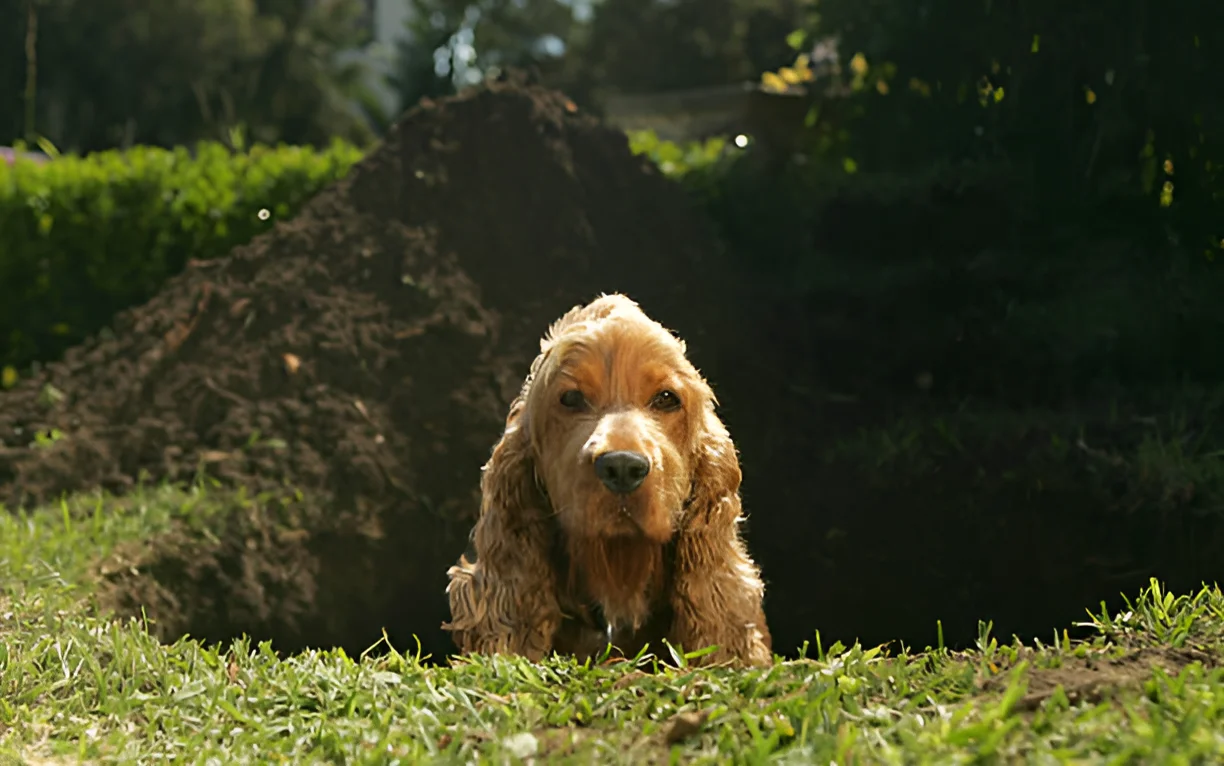No, 2 feet is generally not deep enough to bury a dog as it may not prevent scavengers from disturbing the grave and can lead to odor issues. Proper burial practices are essential to ensure a respectful and secure resting place for your beloved pet. Losing a pet is a deeply emotional experience, and deciding how to lay them to rest can be challenging. One common question pet owners face is how deep to bury their dog. This comprehensive guide explores the considerations and best practices for burying a dog, ensuring a respectful and secure final resting place.
Understanding Burial Depth
Why Depth Matters
The depth at which you bury your dog is crucial for several reasons:
- Preventing Scavengers: A shallow grave can be easily disturbed by scavengers such as coyotes, raccoons, and other animals.
- Odor Control: Proper burial depth helps prevent odors from reaching the surface, which can attract scavengers and cause distress.
- Environmental Protection: A deeper grave helps prevent contamination of groundwater and soil, ensuring environmental safety.
Recommended Burial Depth
The general recommendation is to bury a dog at least 3 feet deep. This depth provides adequate protection against scavengers and helps control odors.
- Small Dogs: For small dogs, a depth of 3 feet is usually sufficient.
- Large Dogs: Larger dogs may require a deeper grave, around 4 feet, to ensure they are adequately covered.
Preparing for the Burial
Choosing the Right Location
Selecting an appropriate location for your dog’s burial is an important step.
- Private Property: If you choose to bury your dog on your property, ensure it is a peaceful and private spot, away from water sources and areas where people gather.
- Pet Cemeteries: Alternatively, pet cemeteries offer a dedicated space for pet burials, providing a maintained and respectful environment.
Checking Local Regulations
Before proceeding with the burial, check local regulations regarding pet burials.
- Permits and Restrictions: Some areas may require permits or have specific restrictions on pet burials. Ensure you comply with these regulations to avoid legal issues.
- Environmental Considerations: Be aware of any environmental guidelines to prevent contamination and ensure a safe burial.
The Burial Process
Gathering Necessary Supplies
Having the right supplies on hand can make the burial process smoother.
- Shovel: A sturdy shovel is essential for digging the grave.
- Gloves: Wear gloves to protect your hands during the digging process.
- Blanket or Cloth: Use a biodegradable blanket or cloth to wrap your dog’s body.
- Marker: Consider using a marker or headstone to identify the grave.
Digging the Grave
Follow these steps to dig the grave properly:
- Size and Depth: Dig a grave that is at least 3 feet deep and wide enough to comfortably accommodate your dog’s body.
- Location Considerations: Avoid areas with tree roots, underground utilities, or future construction plans.
- Safety Precautions: Check for any underground utilities before digging to prevent accidents.
Wrapping Your Dog’s Body
Wrapping your dog’s body with care and dignity is an important part of the burial process.
- Biodegradable Materials: Use a biodegradable blanket or cloth to wrap your dog’s body. This helps protect the environment and allows for natural decomposition.
- Personal Items: You may choose to include personal items such as toys, photographs, or handwritten notes to honor your dog’s memory.
Lowering and Covering the Grave
Carefully lower your dog’s wrapped body into the grave and cover it with soil.
- Gentle Handling: Lower the body gently to avoid any damage or disturbance.
- Covering the Grave: Fill the grave with soil, packing it down firmly to prevent disturbances by scavengers.
- Marking the Grave: Place a marker or headstone to identify the grave and create a lasting tribute.
Alternatives to Burial
Cremation
Cremation is a popular alternative to burial, offering several options for memorializing your pet.
- Individual Cremation: Your dog’s remains are cremated individually, and the ashes are returned to you in an urn.
- Communal Cremation: Multiple pets are cremated together, and the ashes are not returned.
- Scattering Ashes: You can choose to scatter your dog’s ashes in a meaningful location or keep them in a memorial urn.
Pet Cemeteries
Pet cemeteries provide a dedicated space for pet burials, offering maintenance and memorial services.
- Professional Services: Pet cemeteries often provide professional burial services, including grave digging, markers, and maintenance.
- Memorial Options: Many pet cemeteries offer additional memorial options such as plaques, benches, and gardens.
Emotional Considerations
Coping with Loss
Losing a pet is a deeply emotional experience. It’s important to allow yourself time to grieve and find ways to honor your pet’s memory.
- Support Systems: Reach out to friends, family, or support groups who understand the bond you shared with your pet.
- Memorial Activities: Consider creating a memorial, such as planting a tree or creating a photo album, to celebrate your pet’s life.
Involving Family Members
Involving family members, especially children, in the burial process can help them cope with the loss.
- Explaining the Process: Explain the burial process in an age-appropriate manner to help children understand and find closure.
- Participating in the Burial: Allow family members to participate in the burial, such as choosing the location, wrapping the body, or placing the marker.
Conclusion
In conclusion, 2 feet is generally not deep enough to bury a dog as it may not prevent scavengers from disturbing the grave and can lead to odor issues. Proper burial practices, including a depth of at least 3 feet, are essential to ensure a respectful and secure resting place for your beloved pet. By following these guidelines and considering alternatives such as cremation or pet cemeteries, you can honor your pet’s memory in a meaningful and respectful way.
The photo featured below the post headline is Credit: Kolbz/istockphoto
I hope you find this post helpful and informative. If Yes’ feel free to share it with your friends!
Frequently Asked Questions
How deep should I bury my dog?
It is recommended to bury your dog at least 3 feet deep to prevent scavengers from disturbing the grave and to control odors.
Can I bury my dog in my backyard?
Yes, you can bury your dog in your backyard, but be sure to check local regulations and obtain any necessary permits.
What should I use to wrap my dog’s body for burial?
Use a biodegradable blanket or cloth to wrap your dog’s body. This helps protect the environment and allows for natural decomposition.
Are there alternatives to burying my dog?
Yes, alternatives include cremation and pet cemeteries, which offer professional services and memorial options.
How can I help my family cope with the loss of our pet?
Involve family members in the burial process, create memorial activities, and seek support from friends, family, or support groups.

